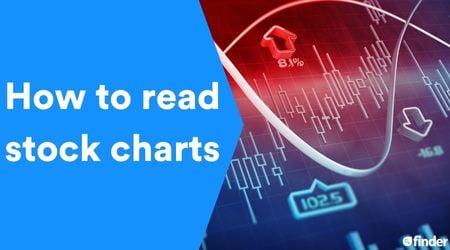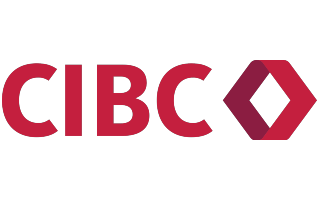As Apple’s valuation hit $2 trillion at the start of August 2020, it reminded many investors that technology is the investment they wished they had bought a decade earlier. While stocks can be a great way of profiting off the success of individual tech companies, exchange traded funds (ETFs) let you diversify your holdings by investing in multiple companies at once.
Do technology ETFs always make money?
The speed at which technology can come into a new industry and change it forever means there are always opportunities to make money. Investors see examples like Amazon, which is worth around 200X more than it was in 2001, or Netflix, which multiplied its worth by 55X over 8 years, and want a piece of that growth for themselves.
Of course, technology is competitive. For every Amazon and Netflix, there is a tech company that doesn’t succeed. Technology stories aren’t always as compelling as they first appear, and companies need to be able to execute successfully on their ideas.
That said, in today’s environment, technology has become more important than ever, and there are probably more structural growth opportunities within technology than in any other sector. Most investors have long-term goals for their savings: they may be saving for retirement, or for their children’s university fees.
It makes sense, therefore, to future-proof an investment portfolio by aligning it with enduring structural trends. An investment in technology helps keep a portfolio focused firmly on the future.
Compare trading platforms to buy ETFs
Finder Score for stock trading platforms
To make comparing even easier we came up with the Finder Score. Trading costs, account fees and features across 10+ stock trading platforms and apps are all weighted and scaled to produce a score out of 10. The higher the score the better the platform - simple.
Why ETFs?
ETFs offer a range of options for both diversified and specialized exposure to technology. While technology ETFs are more expensive than index ETFs, they will usually come with a lower ongoing fee than an active funds. They are one of the cheapest ways to take broad exposure to a basket of technology companies.
At the same time, technology ETFs trade on an exchange. That means they have daily pricing and can be bought and sold moment to moment for a given price. This is different to mutual funds, which only trade once a day and where the sale price may not be clear. This means ETFs can be useful for taking quick decisions – such as selling out during a market crisis.
Diversification – ETF investors can get access to a broad range of technology shares or bonds with a relatively small upfront commitment. Depending on the brokerage platform, there may not even be a minimum amount required to invest. This means that investors don’t have to pick individual technology stocks, which can be risky.
A beginner’s guide to exchange-traded funds (ETFs)
Finder survey: Are men or women more likely to invest in information technology stocks?
Response | Male | Female |
|---|---|---|
| Information Technology | 28.95% | 24.26% |
Why buy an industry-specific ETF?
Anyone who holds an S&P 500 ETF will already have a significant chunk of their portfolio in technology. Around 30% of the index is in the technology sector, with Apple, Amazon, Microsoft and Facebook all among its top 10 holdings. However, if investors want faster growth, an industry-specific ETF can be an alternative option.
It should be said that many of the technology ETFs are weighted by market capitalization. That means you’re unlikely to get access to the next Amazon during its early growth phase. You’d only have meaningful exposure once the company hits a certain size. Nevertheless, technology ETFs have served investors well during both buoyant market conditions and in the sell-off following the pandemic, providing far more resilient than many would have believed.
Technology will have its winners and losers. As such, it can be easier to hold a diversified portfolio of technology names rather than trying to pick individual winners.
These are the key technology ETFs:
- iShares S&P/TSX Capped Information Technology Index ETF (TSX: XIT). This fund replicates the performance of the S&P/TSX Capped Information Technology Index, which tracks leading Canadian-listed tech companies like Shopify, Constellation Software, CGI, Open Text Corp and Blackberry. The management expense ratio is 0.61%.
- TD Global Technology Leaders Index ETF (TSX: TEC). The SolactiveGlobal Technology Leaders Index is the benchmark for this ETF, which holds $1.9 billion in assets. Around 68% of these assets are in technology, with US equities receiving the largest allocation.
- Evolve FANGMA Index ETF (TSX: TECH). The Evolve FANGMA Index ETF makes investing in the world’s biggest tech giants easy. Get combined exposure to Alphabet, Amazon, Apple, Facebook, Netflix and Microsoft. The management fee is 0.40%.
- Technology Select Sector SPDR ETF (NYSEArca: XLK). State Street’s technology ETF has an expense ratio of 0.12%. It aims to replicate the technology sector of the S&P 500 Index investing across technology hardware, storage, and peripherals; software and communications. Apple is 21% of the index and Microsoft 20%.
- iShares Expanded Tech-Software Sector ETF (BATS: IGV). This ETF replicates an index comprising North American equities in the software industry, interactive home entertainment and interactive media and services industries. It has an expense ratio of 0.46%.
- Vanguard Information Technology Index Fund ETF Shares (NYSEArca: VGT). The ETF uses a composite index of MSCI Information Technology indices. Apple and Microsoft are the largest holdings. The expense ratio is 0.10%.
- Fidelity MSCI Information Technology Index ETF (NYSEArca: FTEC). This vast $5.95 billion ETF is based on the MSCI Information Technology index and has an expense ratio of 0.08%.
- iShares U.S. Technology ETF (NYSEArca: IYW). This ETF tracks the Dow Jones US Technology Capped Index. Microsoft and Apple are the largest holdings, but the ETF also includes social media names such as Facebook, plus Alphabet.
Track the sector with tech indices
Most of these generalist technology ETFs will have the largest weightings in familiar names. The MSCI Information Technology index, which forms the basis for the Fidelity ETF for example, has an 18% weighting in Apple and another 15% in Microsoft. Other holdings include Visa, Nvidia, Mastercard and Salesforce.com. It’s worth noting that it doesn’t include Amazon, Facebook or Alphabet (owner of Google), bypassing the social media and ecommerce giants.
The TD Global Technology Leaders Index has a slightly different composition. Apple and Microsoft are only 12% and 11% respectively. Amazon, Facebook and Alphabet are all included, along with Tesla. Investors need to look closely at the composition of each ETF to understand whether they provide the technology exposure they want.
Best Canadian tech stocks on the TSX
Specialist ETFs
Specialist ETFs are increasingly common. These can be a means to access niche areas and, potentially, uncover the next wave of growth. There are now ETFs available in the following areas:
- Cloud computing — Companies are increasingly using the cloud, a remote server hosted on the internet, to store, manage, and process data. This gives them greater flexibility and control over their technology costs.
- Artificial Intelligence — The use of artificial intelligence is becoming increasingly widespread. Companies see its potential for automating time-consuming manual processes. Its uses are myriad: healthcare company may use it to read scans, for example, while logistics companies can use it for efficient route management.
- Internet and ecommerce — The pandemic has accelerated the adoption of online shopping, but the ecommerce trend was firmly in place even before people were forced to stay at home. There are also ETFs specializing in emerging market ecommerce trends, such as the Emerging Markets Internet & Ecommerce ETF (NYSEArca: EMQQ).
- Robotics — The use of robotics is increasingly widespread. Lower development costs, evolving technology and rising cost of labour are encouraging companies to make use of automation and robotics across their businesses. Robotics and automation ETFs will include some familiar companies such as semiconductor groups Advanced Micro Devices or smartphone giant Apple, but also smaller specialist robotic companies.
- Fintech — Technology is also providing disruptive in the financial sector. There has been a proliferation of payment systems, particularly in emerging markets where many people are bypassing mainstream banks altogether. Fintech ETFs focus on key financial technology companies such as Paypal or Square.
- Cyber security — Cybercrime has become a pressing problem for many companies. Hackers have grown more sophisticated and ambitious. Companies are increasingly willing to spend money protecting their systems from attack, which has created a compelling environment for cybersecurity companies.
- Digital transformation — Digitalization has continued to build momentum through the pandemic as companies have recognized the commercial imperative in using technology to rethink existing business practices. In a slow-growth, competitive world, digitalization allows businesses to squeeze out stronger returns and improve productivity. Spending on digital transformation is forecast to reach almost $2 trillion by 2022.
Key risks
The technology sector’s dramatic rise and fall may be 20-30 years ago, but it still looms large for many investors who lost money as technology stocks rose to stratospheric levels and then slumped. It has left an impression of a volatile sector, which is vulnerable to shifts in sentiment.
In recent years, that hasn’t been the case. Not only have technology stocks shown more reliable growth than many other sectors, they have benefited from a low interest rate environment. This is because the ‘risk-free’ rate in the market—the rate investors can hope to achieve without taking any investment risk—is lower. This pushes up the value of future cash flows and therefore higher growth stocks.
In fact, technology stocks have performed well throughout each stage of the cycle. In the recent crisis, they have outperformed other sectors both as markets sold off and as they recovered. This is unusual for any sector and particularly technology.
As such, technology stocks can look invulnerable. However, they are not immune to falls. As the largest and most liquid stocks in the market, technology names can be the first to sell off when markets wobble. Equally, it is worth noting that any technology investment will be significantly skewed to the US market, where most of the major technology names are listed. This can leave the sector vulnerable when sentiment towards the US shifts.
Equally, technology companies tend to have high growth expectations built into their prices. As such, share prices can fall if company earnings don’t keep pace with market opinion.
Bottom line
Technology has been a hugely successful investment in recent years. It remains relatively volatile, but recently it has performed well through a variety of market conditions. As technology becomes a larger part of the way we live and work, it becomes a more important part of the stock market. Although the sector can look expensive relative to other sectors, its faster growth justifies a premium to the wider market.
That said, there will be winners and losers, so it is worth taking a diversified approach. Technology investment is a useful way to ‘future proof’ your portfolio. Want to learn more about stock trading? Check out our detailed guide.
More on investing

How to invest in the EURO STOXX 50
Want to invest in the Euro Stoxx 50 in Canada? Explore investment platforms and popular Euro Stoxx 50 index funds.
Read more…
What are the best stocks for beginners with little money to invest?
Want to dive into investing but don’t have much to spend? Take a look at these types of stocks.
Read more…
Meme stocks: What they are and examples of popular stocks
Meme stocks can produce large gains in short periods, but the stocks are volatile.
Read more…
How do ETFs work?
Your guide to how ETFs work and whether this type of investment is right for you.
Read more…
How to read stock charts
Learning how to read stock charts and recognize chart patterns can unlock your success as a trader.
Read more…
What are stocks?
Owning a stock means you own part of a company and can potentially grow your wealth. But there is a risk of loss.
Read more…More guides on Finder
-
How to invest in the EURO STOXX 50
Want to invest in the Euro Stoxx 50 in Canada? Explore investment platforms and popular Euro Stoxx 50 index funds.
-
How to buy Rheinmetall stock in Canada
Steps to owning and managing RHM, with 24-hour and historical pricing before you buy.
-
How to buy Riot stock in Canada
Steps to owning and managing RIOT, with 24-hour and historical pricing before you buy.
-
Best renewable energy stocks
These are the best renewable energy stocks to buy now in Canada.
-
A guide to futures trading in Canada
Learn the pros and cons of futures trading, how it works and how to start trading.
-
Best stocks to buy right now in Canada
Finder’s unique algorithm found the 20 best TSX stocks to buy right now.
-
Guide to online trading in Canada
Compare the best online trading platforms in Canada and learn how to buy stocks online.
-
How to invest in the S&P 500 in Canada
Find out how to invest in the S&P 500 in Canada—one of the world’s most popular stock indices—to diversify your portfolio.
-
How to buy Meta Platforms stock in Canada
Steps to owning and managing META, with 24-hour and historical pricing before you buy.
-
How to buy Amazon stock in Canada
Steps to owning and managing Amazon stock (AMZN), with 24-hour and historical pricing before you buy.




